Looking for a smart way to add greenery to your home without sacrificing floor area? Repurposing materials like rain gutters offers an inventive solution. These lightweight, durable systems let you grow herbs, flowers, or small veggies vertically—perfect for patios, balconies, or even fences.
Vertical gardens are booming in popularity, and for good reason. They maximize limited areas while adding visual interest to walls or unused corners. As Sustainable Home Magazine highlights, this approach blends eco-friendliness with affordability—most projects cost under $50 using basic tools.
You can attach these planters to nearly any outdoor surface. Paint them to match your brick walls or leave them metallic for industrial charm. Want something more dynamic? Try hanging gutters from sturdy hooks to create cascading greenery. The best part? You’re giving old materials new life while reducing waste.
Key Takeaways
- Vertical gardens optimize small spaces while adding natural beauty
- Repurposed materials like gutters cut costs by up to 70% compared to store-bought planters
- Systems work on walls, fences, or freestanding structures for flexible placement
- Most DIY setups take 2-4 hours using common household tools
- Ideal for growing herbs, strawberries, or decorative plants with shallow roots
Ready to get started? We’ll walk through simple steps to design your own space-saving garden in the next section. Whether you’re a seasoned gardener or just starting out, this project adapts to your skill level and outdoor area.
Planning and Preparing Your Vertical Garden Space
Transforming unused walls into lush plant displays starts with smart spatial planning. Begin by examining your outdoor area with fresh eyes—even narrow spaces beside walkways or above railings can become thriving green zones.
Assessing Your Outdoor Area and Space Limitations
Measure available surfaces like brick walls or wooden fences. These sturdy structures support planter weight best. For stability, position support boards 35 cm above ground and space them 30 cm apart. This prevents soil spillage while allowing root growth.
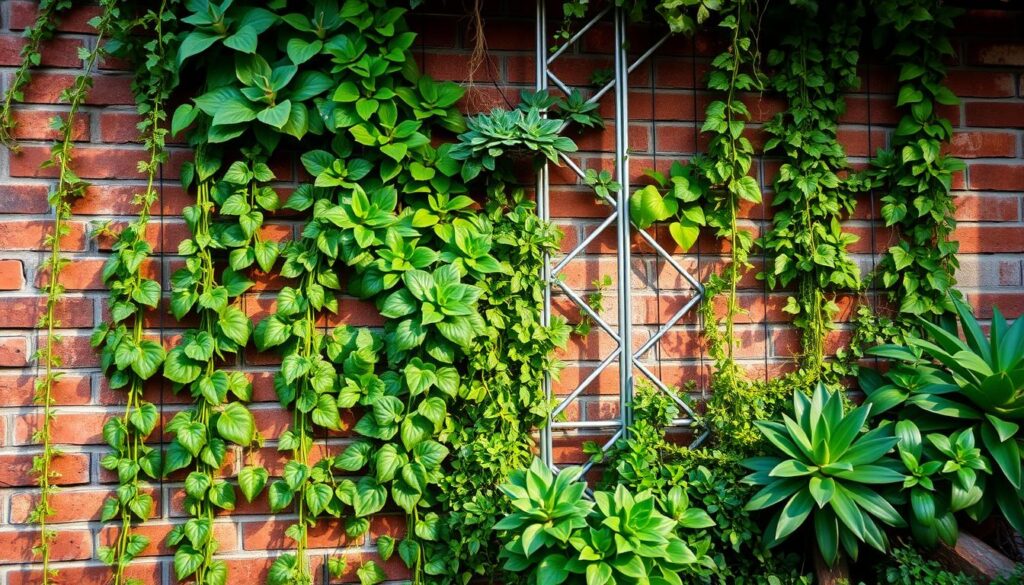
Track sunlight patterns across your chosen wall. Most herbs need 4-6 hours of direct sun daily. South-facing surfaces often work best. If using potting soil mixes, ensure they’re lightweight to reduce strain on mounting hardware.
Gathering Inspiration from Practical Examples
See how others create vertical gardens using color contrasts. A matte-black gutter system against white stucco makes greenery pop. For rustic charm, pair aged copper planters with stone garden walls.
As Sustainable Home Magazine notes:
“Strategic design turns functional installations into focal points—think cascading succulents beside seating areas or aromatic herbs near kitchen windows.”
Test layouts using paper templates before drilling. This simple step helps visualize spacing and avoids costly adjustments later. Remember: your vertical garden should complement your lifestyle, not complicate it.
Choosing Materials and Tools for Your Gutter Garden
Building your vertical oasis begins with smart material choices. Whether updating an old setup or starting fresh, the right components ensure healthy plants and lasting structure. Let’s break down what you’ll need for success.
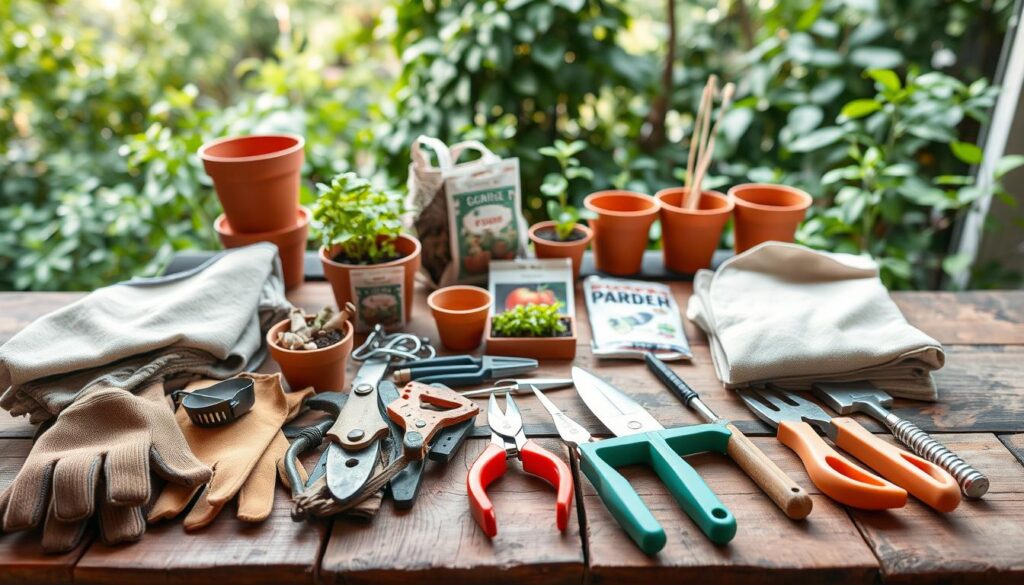
Selecting Components for Stability and Style
Aluminum or vinyl channels work best for planters—they’re weather-resistant and lightweight. Match their color to your roof’s existing trim for cohesive outdoor design. Brackets should support 15-20 lbs per linear foot when filled with damp soil.
Space drainage holes every 25 cm using an 8 mm drill bit. This spacing prevents soil loss while letting excess water escape. As Sustainable Home Magazine advises:
“Clean mounting surfaces thoroughly with a high-pressure washer before installation—it removes debris that weakens adhesive bonds.”
Essential Gear for Precision Work
A cordless combi drill handles both wood and masonry surfaces. Use a 4 mm bit for pilot holes in brackets and an 8 mm masonry bit for wall anchors. A cross-line laser ensures straight rows, especially on uneven brick or stone.
Key tools include:
- High-pressure washer ($80-$150 rental)
- Titanium-coated drill bits (last 3x longer than standard)
- Silicone sealant for waterproofing joints
These investments pay off—proper tools cut installation time by 40% compared to makeshift alternatives. Now you’re ready to create a thriving green wall that complements your space perfectly.
DIY Techniques for Constructing Efficient Gutter Garden Projects
Transform your outdoor walls into flourishing green spaces with these hands-on methods. Proper preparation and smart modifications ensure your setup thrives for years while complementing your home’s style.
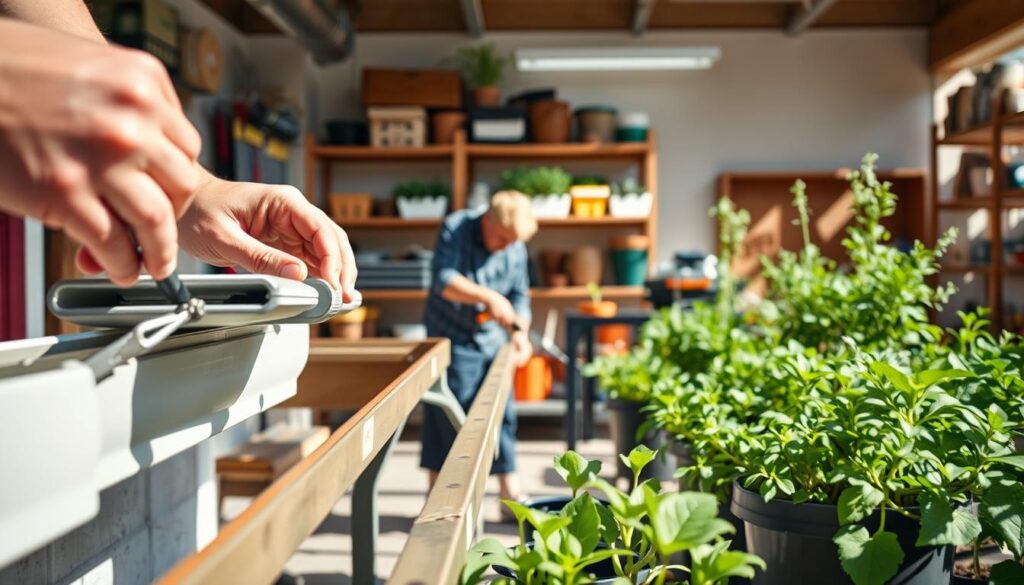
Step-by-Step Preparation of Walls and Boards
Mark drill points every 30 cm using a cross-line laser. This ensures level rows. Secure treated 2×4 boards to masonry walls with 8 mm wall plugs and 75 mm screws. A cordless combi drill makes quick work of both pilot holes and final fastening.
| Tool | Specs | Purpose |
|---|---|---|
| Combi Drill | 18V, 2 Batteries | Drilling & Fastening |
| Masonry Bits | 6 mm & 8 mm | Concrete/Brick Surfaces |
| Galvanized Screws | 75 mm Length | Weatherproof Hold |
Establishing Efficient Drainage with Custom Modifications
Create five 8 mm holes per 1.2 m gutter length using a step drill bit. Space them 23 cm apart along the channel’s base. As Sustainable Home Magazine recommends:
“Angle holes slightly downward at 15° to prevent soil loss while ensuring complete water drainage.”
Innovative Ideas Using Dummy Downspouts
Convert spare downspouts into vertical planters with these steps:
- Cap both ends with removable plugs
- Drill 6 mm holes every 20 cm along one side
- Secure to fence posts using stainless wire loops
Position your planters 45 cm above ground for easy access. Use matte-black metal brackets on white walls for modern contrast. These techniques help your living wall blend seamlessly with your house while supporting healthy plant growth.
Design Ideas and Plant Selections for a Vibrant Space
Turn lifeless walls into thriving displays by pairing smart plant choices with artistic arrangements. The right combination of greenery transforms blank surfaces into dynamic focal points that evolve with the seasons.
Incorporating Herbs, Succulents, and Strawberries
Choose plants that thrive in shallow soil and vertical conditions. Basil, thyme, and oregano grow well in sun-drenched spots—position these 1.2 m above ground for easy harvesting. Succulents like sedum or echeveria need minimal water, making them perfect for upper levels that are harder to reach.
| Plant Type | Best For | Care Tips |
|---|---|---|
| Strawberries | South-facing walls | Water every 2 days in summer |
| Herbs | Kitchen-adjacent areas | Trim weekly for bushy growth |
| Succulents | High, dry locations | Mist monthly in winter |
Color and Texture: Transforming Blank Walls into Living Art
Mix chartreuse sweet potato vine with burgundy coral bells for striking contrast. As Sustainable Home Magazine suggests:
“Use the 60-30-10 color rule: 60% dominant green, 30% accent hues, 10% neutral textures.”
Arrange planters in staggered lines to create depth. Keep the floor space clear by mounting systems 45 cm above ground level. Time your plantings—pair spring pansies with fall ornamental kale for year-round appeal.
Rotate succulents every six months to maintain vibrant colors. Try trailing plants like ivy to soften angular lines. Your living wall will become a changing artwork that delights through all seasons.
Finishing Touches and Maintenance for a Lasting Impact
Keep your living wall thriving year-round with simple upkeep strategies. Start by sealing end caps using hot glue to prevent soil loss—apply a 3 mm bead along the inner edges. Check all screws monthly with a cordless drill to maintain structural integrity, especially after heavy rains.
Inspect the bottom drainage holes weekly for clogs. Use a straightened coat hanger to clear debris without taking up much room. For concrete walls, scrub mineral deposits with white vinegar every spring to preserve surfaces.
Adjust watering based on shade patterns—plants in full sun need 20% more hydration during summer. Rotate strawberries to sunnier spots if fruit production slows. As Sustainable Home Magazine notes:
“A five-minute weekly check prevents 80% of common issues—loose brackets, algae growth, or uneven soil.”
Refresh glue seals annually before winter. Add decorative pebbles or trailing ivy to enhance your style while hiding hardware. With these quick habits, your vertical oasis stays lush with minimal effort.

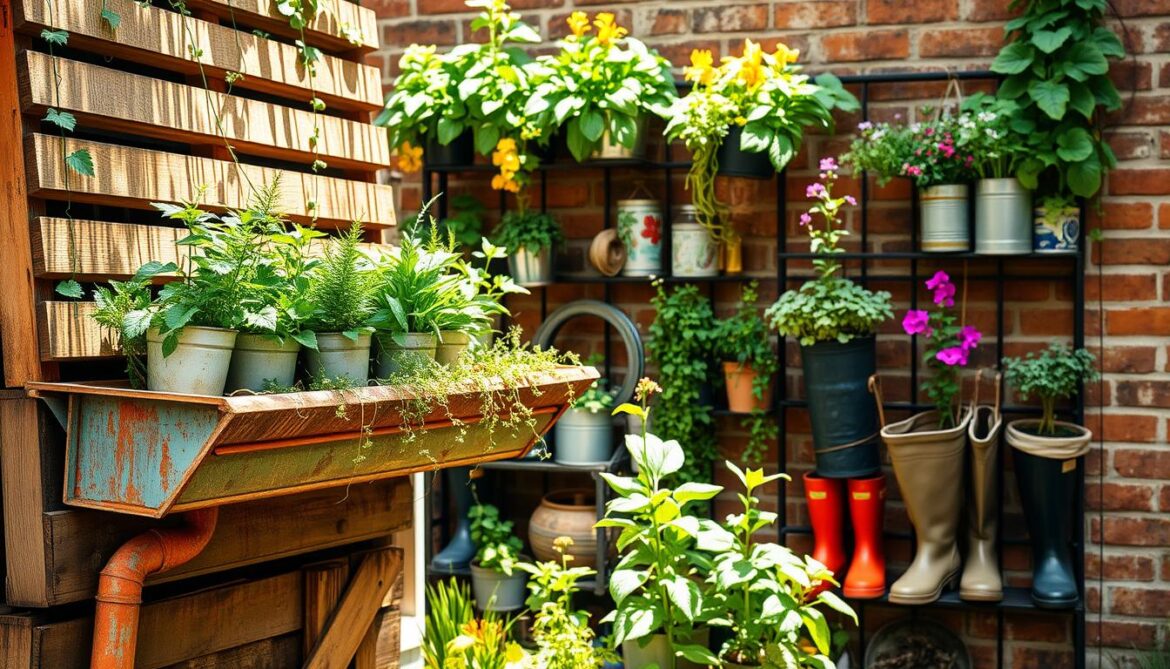
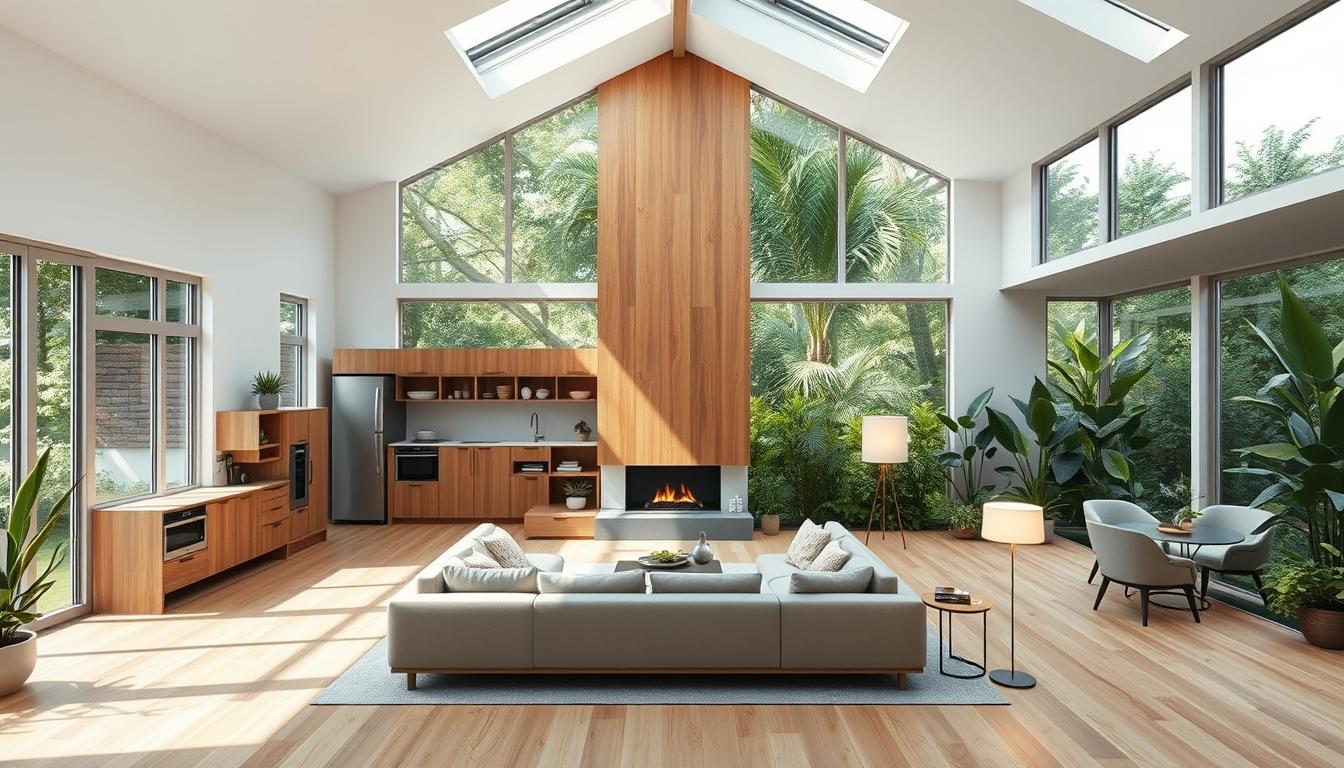
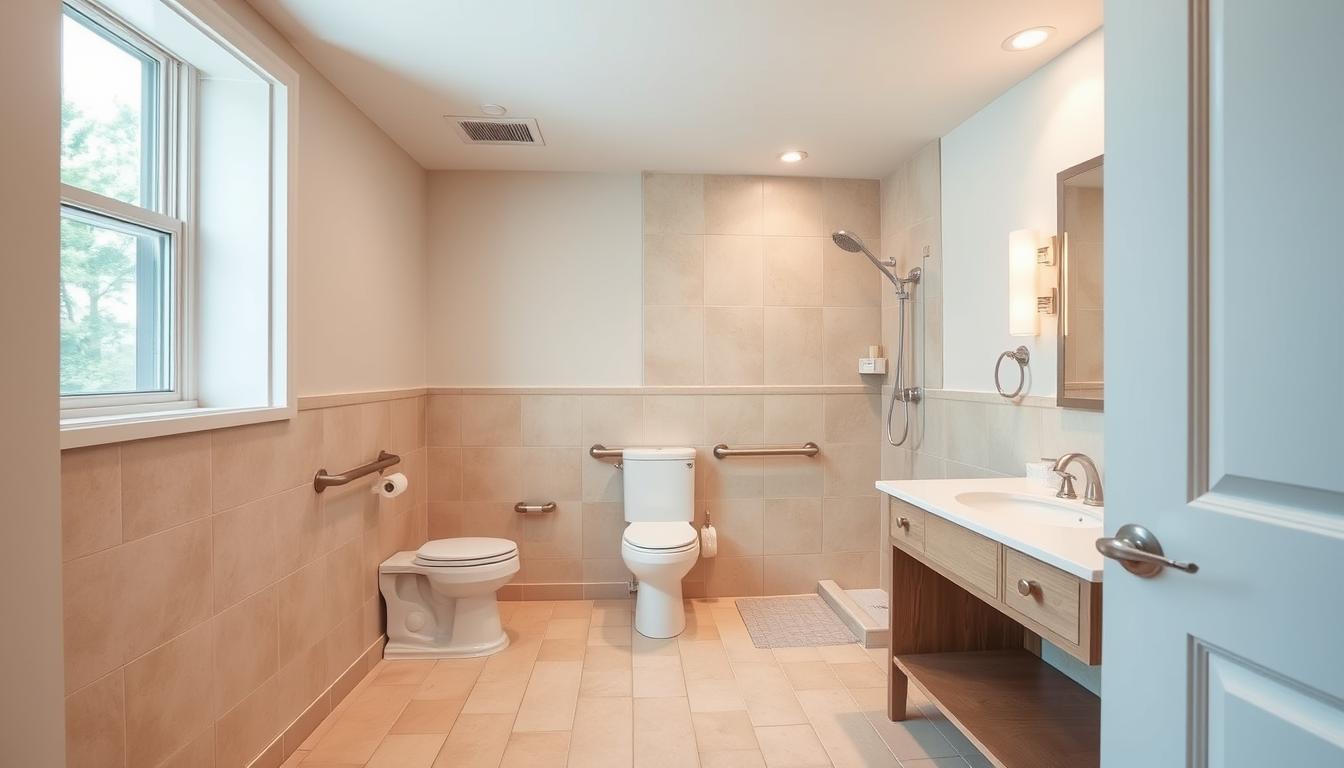

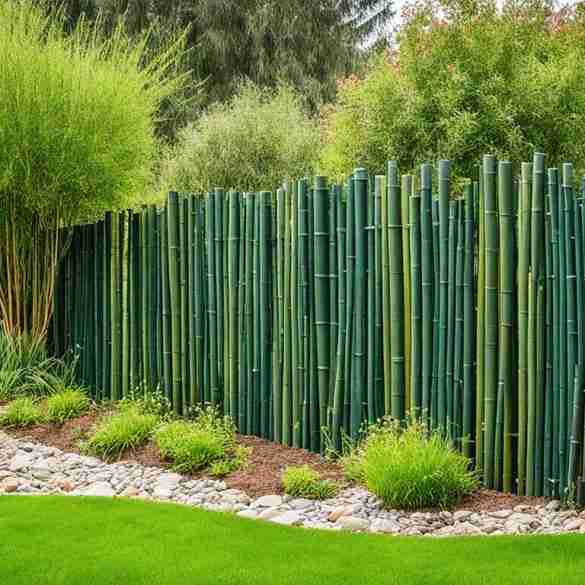
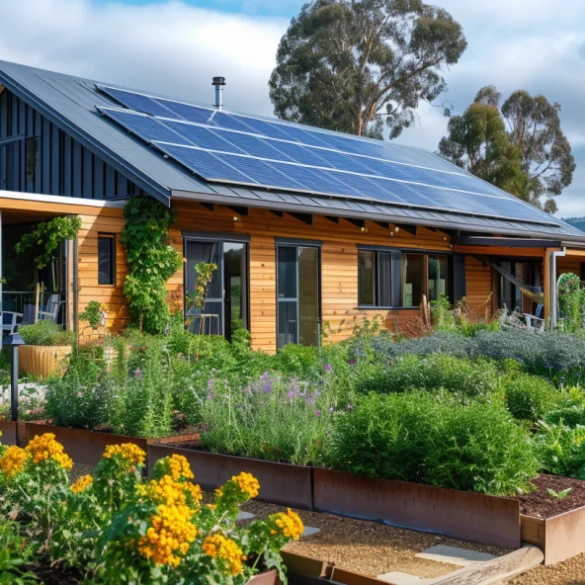



1 comment
[…] budgets. We focus on seven key areas: saving energy, using water wisely, managing kitchen waste, gardening sustainably, monitoring energy, upgrading bathrooms, and finding solutions for renters. Each project has a […]